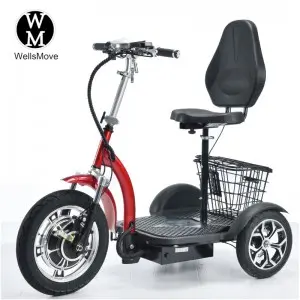Mobility scooters have become an important mode of transportation for individuals with limited mobility. These scooters run on batteries, so it’s crucial to make sure the batteries are in good condition. One way to assess the health of an e-scooter battery is through a load test. In this article, we will discuss the importance of electric scooter battery load testing and provide a step-by-step guide on how to perform this test.
Importance of Scooter Battery Load Testing
Scooter batteries are the lifeblood of these vehicles, providing the power needed to keep the vehicle running. Over time, battery performance may deteriorate due to factors such as age, usage, and environmental conditions. Load testing is a method of evaluating a battery’s capacity and overall health by placing it under a controlled load.
Load testing is crucial for many reasons. First, it helps identify batteries that are no longer able to hold a charge or provide the required power. This is essential to prevent unexpected malfunctions while using the scooter. In addition, load testing can reveal potential problems with the battery, such as high internal resistance or reduced capacity, that may not be apparent through regular use alone.
How to load and test a mobility scooter battery
Before load testing a mobility scooter battery, it is important to gather the necessary tools and equipment. You will need a digital multimeter, a battery load tester, and a set of goggles and gloves. It is important to follow safety precautions when working with batteries to prevent accidents or injuries.
Here are the steps to load test a mobility scooter battery:
Step 1: Safety Precautions
Make sure the electric scooter is turned off and disconnected from the power source. Wear safety goggles and gloves to protect yourself from any potential hazards.
Step 2: Battery Check
Visually inspect the battery for any signs of damage, corrosion, or leaks. If any problems are found, the battery should be replaced before load testing.
Step 3: Voltage Check
Use a digital multimeter to measure the battery’s open circuit voltage. This will provide an initial indication of the battery’s charge status. A fully charged battery should read approximately 12.6 to 12.8 volts.
Step 4: Load Test
Connect the battery load tester to the mobility scooter battery according to the manufacturer’s instructions. A load tester will apply a controlled load to the battery while measuring the voltage and capacity under load.
Step 5: Record the results
Monitor the voltage and capacity readings on the load tester as the test proceeds. Record the results for each battery and compare them to the manufacturer’s specifications.
Step 6: Interpret the results
Based on the load test results, evaluate the overall health of the battery. If the battery experiences a noticeable drop in voltage or does not reach specified capacity, it may be a sign that it needs to be replaced.
Maintain mobility scooter batteries
In addition to load testing, proper maintenance is crucial to extending the life of your mobility scooter battery. Here are some tips for maintaining your mobility scooter battery:
Charge regularly: Even when the scooter is not in use, it is important to keep the battery charged. Regular charging helps prevent your battery from being deeply discharged, which can cause irreversible damage.
Cleaning and Inspection: Check the battery regularly for any signs of corrosion, leakage, or physical damage. Clean battery terminals and connections to ensure good electrical contact.
Avoid extreme temperatures: Store your mobility scooter in a cool, dry place to prevent exposure to extreme temperatures that can affect battery performance.
Proper Use: Follow the manufacturer’s scooter operating guidelines, including weight limits and recommended usage patterns. Avoid overloading the scooter as this can put undue stress on the battery.
By following these maintenance tips and performing regular load tests, electric scooter users can ensure that their batteries remain in optimal condition, providing reliable power to their scooters.
In summary, e-scooter batteries play a vital role in the performance and reliability of these vehicles. Load testing is an important way to evaluate battery health and capacity, helping to identify potential problems and prevent unexpected failures. By following the steps outlined in this article and properly maintaining your battery, electric scooter users can enjoy longer battery life and uninterrupted mobility.
Post time: May-06-2024



